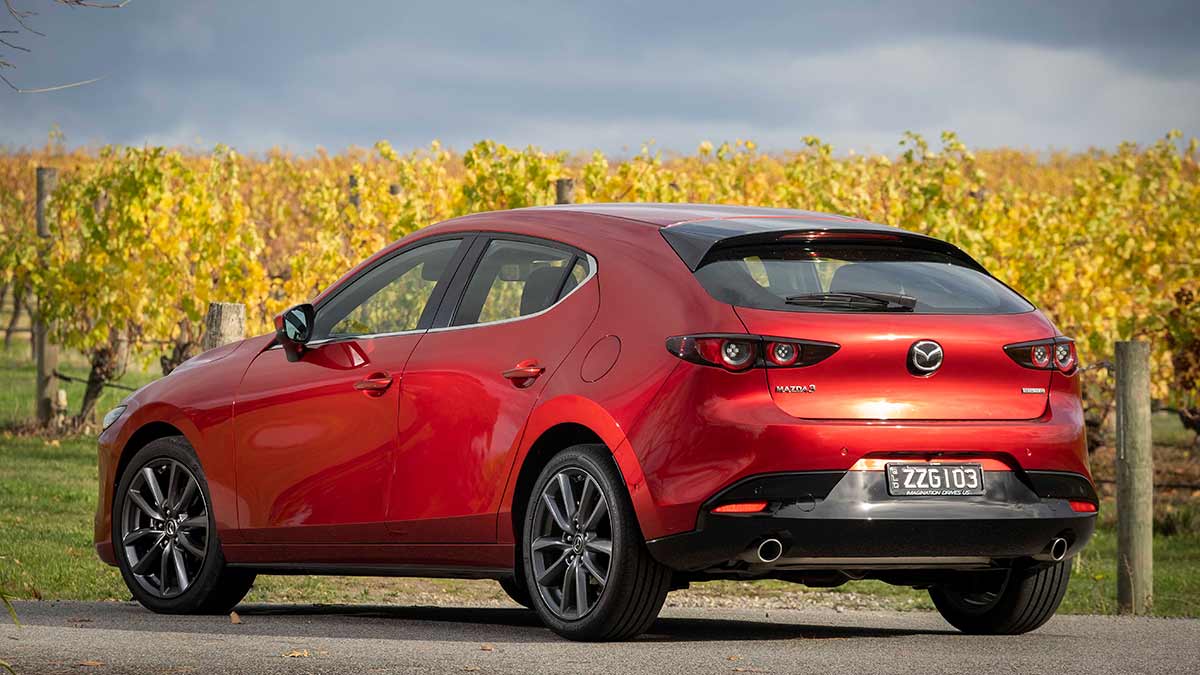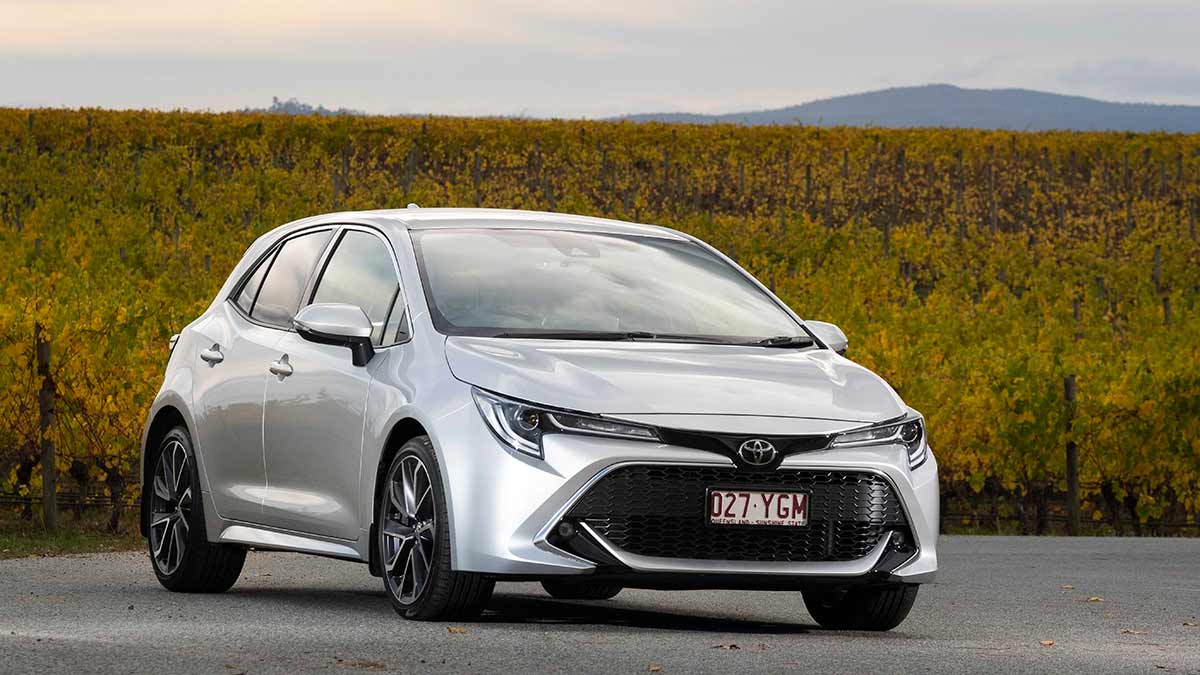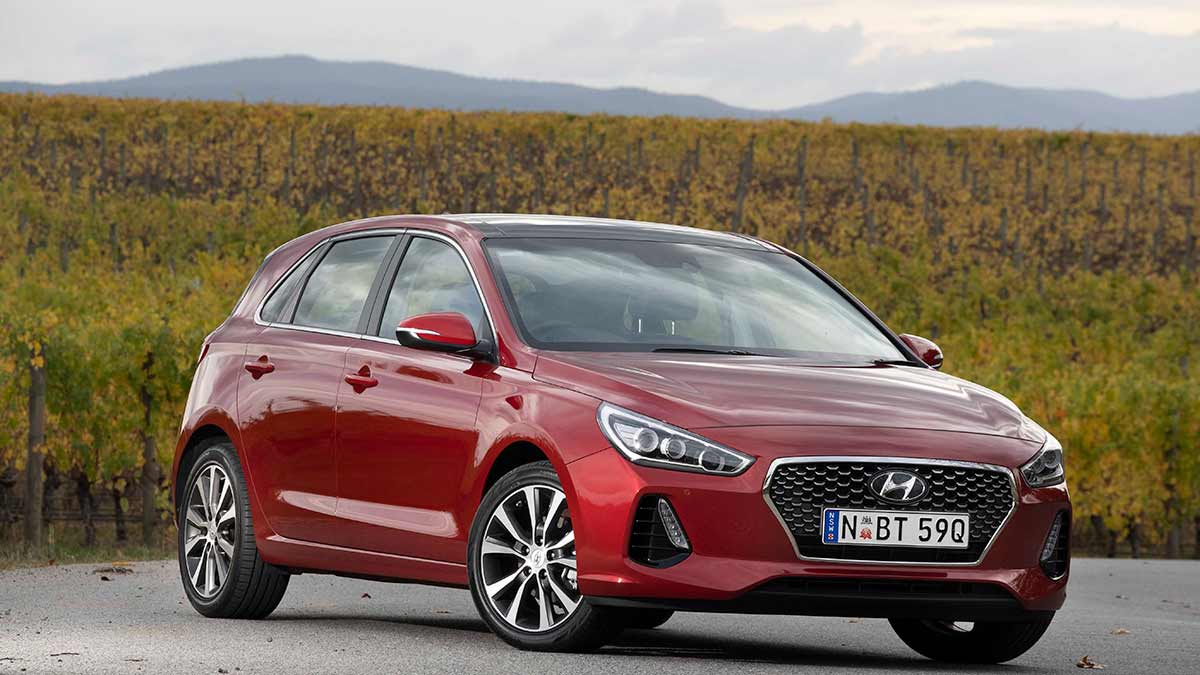The ninth-generation Toyota HiLux has arrived, bringing with it a futuristic forward exterior design, more safety and tech and the same rugged capability owners love. Will the updates tempt private buyers away from the Ford Ranger or are they just enough to keep fleets onside?
Hyundai, Toyota or Mazda: Who will win the battle of the hatchbacks?

We’ve compared three of Australia’s top-selling small-to-medium, five-door hatchbacks.
You’re in the market for a small-to-medium five-door hatchback you have some homework to do. Tyranny of choice is the issue here, with a plethora of high-quality models on the market, each of them sporting multiple variants.
We’ve taken some of the research out of the equation by comparing three of the top-sellers in this booming sector – the Hyundai i30, Toyota Corolla and Mazda3. Four drivers put them through their paces over two weeks in day-to-day city driving, then for an extended country drive to Echuca and back, testing on highway and back roads and in all conditions.
Mazda3
Thumbs up: Superb driving dynamics.
Thumbs down: Poor visibility.
Toyota Corolla
Thumbs up: Performance and economy.
Thumbs down: Small boot.
Hyundai i30
Thumbs up: Ease of entry and best visibility.
Thumbs down: Starting to show its age.
The elder of our trio is Hyundai’s proven i30 which has been around in its current form since the 2017 model was upgraded in April 2018. Toyota’s much-improved all-new Corolla was released in November 2018, while the latest arrival is the fourth-generation Mazda3 that hit the market in April 2019.
In hatchback form the Corolla has seven variants, the Mazda3 has 12 and the i30 15, one for every taste from budget to sporting. For this test, we weren’t able to get identical equipment grades but mechanically our cars were directly comparable, with 2.0-litre naturally aspirated petrol engines, automatic transmissions and front-wheel drive.
The Mazda3 G20 Evolve, at $27,690 plus on-road costs, is one up from the entry-level model and generously equipped for its position in the range, while the stylish Corolla ZR ($30,370 plus on-road costs) and leather-trimmed i30 Premium 2.0 ($32,790 plus on-road costs) both sit higher in their model line-ups and are equipped accordingly.
Each has pluses and minuses. For example, handy head-up displays are featured in the Corolla ZR and Mazda3 Evolve. Apple CarPlay and Android Auto are standard in the i30 and Mazda3, but won’t be available in the Corolla until later in the year.
Aimed at the same target market and intended for general duties, these three cars are very similar, so minor differences and personal preferences will determine the final pecking order.
It all starts with the body styling. Both the Toyota and Mazda have gone for contemporary curves. The smart-looking Mazda3 has clean lines, a sloping roofline and chunky rear quarters, while the Corolla has a bolder, slightly sportier shape.
In some respects style has trumped function in both. The Mazda3 has a low seating position and quite an enclosed cabin with thick pillars, an upwardly sweeping waistline and smallish rear windows creating significant blind spots. There is an airier feel to the Corolla when looking to the front and side but the view to the rear is also restricted. Blind-spot monitoring and reversing camera don’t entirely eliminate the problems.
The squarer shape of the i30 may not be as eye-catching, but there are practical advantages. All-round vision is much better in the i30 and bigger door openings make entry and exit easier. The cabin is also slightly roomier. There is more space in the rear, but some compromises in the front-seat position may be required to find enough leg room to comfortably accommodate large adults. Boot capacity too is significantly better than the Mazda, with the Corolla lagging a little further behind.
The i30, however, shows its age in the dash layout, instrumentation and trim. There is a premium look and feel to the upgraded Mazda3’s cabin, despite cloth seats, while the Corolla is also well put together and looks bright and modern. Extra bolstering in the ZR’s sports-style front seats adds to the appeal.
Once again, there is little difference in the outright performance and on-road ability. They all do the job expected of a mainstream 2.0-litre vehicle with consummate ease. What separates them is the delivery.
Mazda3 is the most refined with a new-found cabin quietness, while Mazda’s SkyActiv 2.0-litre engine and six-speed automatic combination is responsive and linear in the smooth way it puts power to the road. The handling is sure footed, it has a precise steering feel and the ride is comfortably controlled.
Corolla has always had a reputation for reliability, but Toyota has pepped up the fun-to-drive factor. Featuring a direct-injected 2.0-litre engine (for the first time), it is the most powerful of our group, and also achieves the best fuel consumption.
The electronic continuously variable transmission-style automatic has a new launch gear mechanism for brisker take-offs, but under acceleration at higher speeds the characteristic CVT operating noise becomes noticeable. Major improvements to the chassis, suspension and steering deliver a rewarding driving experience while maintaining a comfortable ride.
The i30 has a proven reputation for driving ease and is very user-friendly around town. Acceleration is responsive, and the conventional six-speed automatic does its job with minimal fuss. The ride is on the firm side but not bone-jarring, while the engine noise gets a touch raspy when the car is driven hard. It was the thirstiest of our trio on the test drive, consuming 8.3L/100km compared to the Corolla’s 7.1L and the Mazda3’s 7.5L.
All three cars have five-star ANCAP ratings, and for those who prefer a sportier drive, each brand offers higher-performance engine options.
The verdict
In a tough contest, Mazda3 with its refined driving manners takes the points narrowly, just ahead of the Corolla, while the i30’s practicality and all-round ability won’t disappoint.
|
Price |
As tested: $27,690 + $2219 on-road costs Model range: $24,990 to $37,990 |
As tested: $30,370 + $4110 on-road costs Model range: $22,870 to $31,870 |
As tested: $32,790 + $3961 on-road costs Model range: $19,990 to $35,490 |
|---|---|---|---|
|
Drivetrain |
2.0-litre four-cylinder, six-speed automatic and FWD |
2.0-litre four-cylinder, continuously variable transmission (CVT) and FWD |
2.0-litre four-cylinder, six-speed automatic and FWD |
|
Fuel |
7.5L/100km (RACV test) |
7.1L/100km (RACV test) |
8.3L/100km (RACV test) |
|
Power |
114kW@6000rpm |
125kW@6600rpm |
120kW@6200rpm |
|
Torque |
200Nm@4000rpm |
200Nm@4400rpm |
203Nm@4700rpm |





